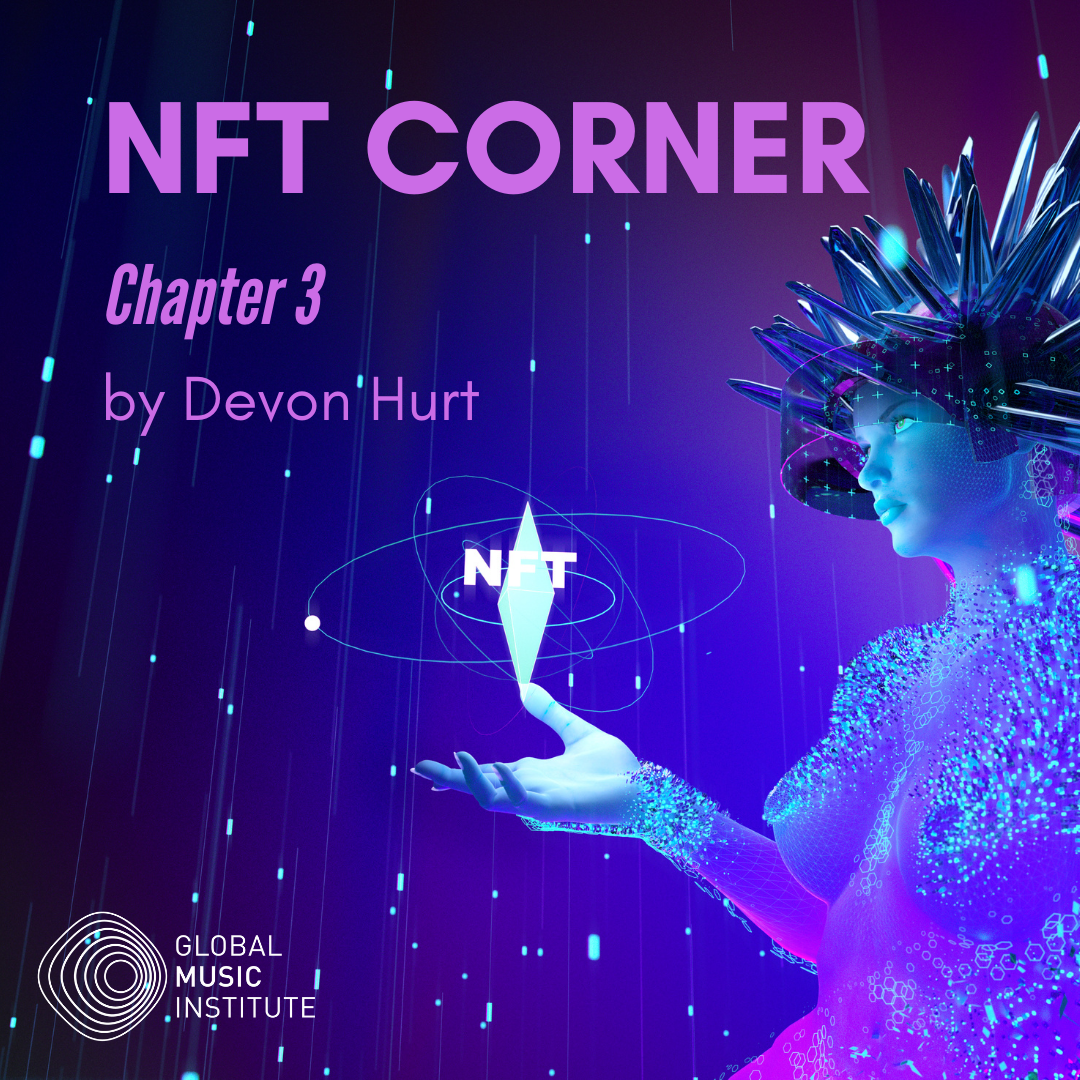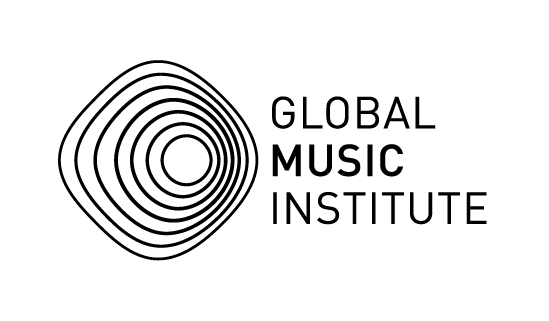
26 Nov NFT Corner: Chapter 3
GMI Friends, You may have noticed something about these articles so far. Namely the fact that it’s a series on NFTs, and I’ve yet to mention them even once! This is very much by design. Like any paradigm-shifting innovation, the rise of NFTs has been characterised by a flurry of optimism, followed quickly by a scrambling for use cases, and a sea of grifters and con-men. All this noise can make it difficult to see the forest for the trees, which is why I’ve chosen largely to ignore the current NFT landscape in this series and focus more on the history of art. My hope is that this will give you a stronger understanding of the dilemmas facing the modern Artist, and the potential that NFTs have to solve (or at least change) them. In our 4th and final instalment, I’ll be laying out my thoughts on the future of art, and the place NFTs will have in it. But we have one more topic to discuss before we get there, and that’s the famously tricky subject of postmodernism. Below is a paper I wrote in 2017 on the subject, through the lens of the work of composer John Cage. I believe he predicted more of the modern musical and artistic world than anyone else in the 20th century, and an understanding of his work is crucial to understanding where we are now.
What happens when the world is a stage?
Cage and Postmodernism
According to British music critic Michael White, John Cage’s stock response to the question of whether his music would endure the test of time was “I’m afraid it will.” The negative tone was likely meant as self-deprecating humour at the time, but has turned out to be very prophetic in a present day cultural landscape that has been shaped by Cage’s ideas far more than he ever could have imagined while he was alive. Over the years, his influence has trickled down from the avant-garde into the bedrock of every medium of art. His conception of the role of the composer, and his definition of what music is, were once rejected and ridiculed as unmusical by his peers and mentors (Schoenberg once famously told him he “had no ear.”); but have now become accepted, if not as fact, then at least as completely acceptable stances for an artist to take. In this paper, I plan to explore the implications of the normalizing of these two ideas, the effect they have had on both popular and avant-garde music, and their role in postmodernism as a cultural aesthetic across all of society.
Cage’s most well-known work, 4’33”, is in many ways the most clear artist statement of his stance that all sound can be music. But his understanding of the sonorous qualities of traditionally non-musical sounds and their potential can be traced back to over a decade before the 1952 release of 4’33”. In his 1937 lecture to the Seattle arts society titled “The Future of Music: Credo” (Later published in Silence– the famous collection of his writings), he states:
“Wherever we are, what we hear is mostly noise. When we ignore it, it disturbs us. When we listen to it, we find it fascinating. The sound of a truck at fifty miles per hour. Static between the stations. Rain. We want to capture and control these sounds, to use them not as sound effects but as musical instruments. Every film studio has a library of “sound effects” recorded on film. With a film phonograph, it is now possible to control the amplitude and frequency of any one of these sounds and to give to it rhythms within or beyond the reach of the imagination. Given four film phonographs, we can compose and perform a quartet for explosive motor, wind, heartbeat, and landslide.”
In this short introduction, Cage brings into focus some of the most influential aspects of his conception of music. He acknowledges the importance of context, pointing out that an individual’s decision whether or not to listen to a sound determines our appreciation of it. His assertion that one could compose a quartet for four “non-musical” sounds implies that previous definitions of music, relying on some basis of tonal harmony or use of traditional instruments, were insufficient, and in the next paragraph he proposes doing away with the term altogether:
“If this word ‘music’ is sacred and reserved for eighteenth- and nineteenth-century instruments, we can substitute a more meaningful term: organization of sound.”
Today, this substitution of terms is no longer necessary. “The organization of sound” would now serve as a fairly non-contentious definition for music. Indeed, Merriam-Webster’s number one definition of music today reads “the science or art of ordering tones or sounds in succession, in combination, and in temporal relationships to produce a composition having unity and continuity.” A more long-winded definition to be sure, but not one that disagrees with Cage’s substitute.
The effects of this new definition can be found in every corner of modern music. In the avant-garde, the prevalence of the use of “field recordings,” is a direct fulfilment of Cage’s predictions. The work of Steve Roden and the “lowercase” movement of composers, serves as a fantastic example. In Roden’s bio on his website he describes his music as follows:
“in the sound works, singular source materials such as objects, architectural spaces, and field recordings, are abstracted through humble electronic processes to create new audio spaces, or possible landscapes. the sound works present themselves with an aesthetic Roden has described as lower case – sound concerned with subtlety and the quiet activity of listening.”
Roden’s breakthrough album Forms of Paper exemplifies this method of working. Over the course of 53 minutes, Roden uses an array of filtering techniques to manipulate the sound of rustling paper. The texture never moves dramatically, but instead slowly shifts, like floats of ice in the arctic. Once the listener has been immersed in the piece for long enough, the brain starts playing tricks on itself, and things like a pulse and tonality seem to emerge. But they are only in the mind, and disappear as soon as you begin to recognize them.
Bernhard Günter describes a similar musical concern in his 2004 interview with James Saunders (Published in The Ashgate Research Companion to Experimental Music, pp-271-281):
“…what I’m trying to do is to create sound work that invites people to pay attention instead of aggressing them, something they can lean into, rather than recoil from it. Of course when I have a sound source that approaches me softly, I will lean forward towards it, feel that it is something I might want to perceive, and that is more pleasant than 120 decibel thrown at me with no means to escape. Hence my tendency to create my work from rather low volume sounds, and to underline tiny details that invite the listener to explore them. I believe this kind of music can make a person more aware of the hearing process, and essentially sharpen one’s perception/awareness.”
Günter is much less concerned with purity of process than Roden is, and as a result his music contains a wider diversity of sounds. In his five movement piece Un Peu De Neige Salie, he uses a pallet of sounds that sit right on the edge of both human hearing and perception. High frequency drones are present throughout, hovering right around 20,000 Hz, drifting between being heard and being felt. Clicks and pops initially go ignored as imperfections in the recording eventually cluster and form a pulse. Everything about the piece encourages the kind of “leaning in” Günter describes, and makes anything but deep listening impossible, as a passive listener likely wouldn’t notice the piece at all.
This affinity for using subtle, found sounds and putting them into the foreground can also be found in abundance in current popular music. Sampling has been an integral part of pop music for decades now, ever since hip-hop started getting radio play. But in the past 5-10 years or so, a group of south London producers including James Blake, Mount Kimbie, and Burial, have popularized a style that shares a lot of the same concerns as Cage, and by extension Roden and Günter. Blake is often pointed to as the poster boy for the style, due to his production work with American chart-toppers like Beyonce and Drake. His work is characterized by an extreme (for pop music) privileging of negative space and the subtle layering of the kind of clicks and pops characteristic of what would typically be considered a low quality recording.
Blake’s remix of the Mount Kimbie track Maybes is a prime example of his style. The track is a remix in name only, as it uses only a minimal amount of material from the original. The opening handclap sample is uniquely rich in it’s frequency content, and sounds like it was both close-mic’d to get every subtle timbral change, and recorded with a room mic to capture the reverberant space. It repeats, unchanging, for an almost uncomfortable amount of time. This has the effect of making the listener “lean in,” as Günter described. It also sets up a set of expectations for the listener, as it implies a pulse and a certain level of lo-fidelity audio quality. However, Blake breaks these expectations as soon as he sets them, introducing a re-pitched vocal sample that is jarring in comparison, as well as a drum loop that flips the pulse around from what the claps implied. An understated set of triangle-wave chords also enter, just enough to outline the tonality of the piece. The skeleton of a dance track emerges. But instead of layering on the typical air horns and 808 bass drums typical of electronic dance music, Blake introduces a subtle mix of electronic clicks and found sounds. Gradually, the silences are filled in, building to a climactic B section that much more closely resembles the apex in a typical dance track. But even in this section, Blake’s ear for nuance comes through, as there is a white noise over the entire section that sits right on the edge of being pitched.
All of these artists share a common practice in their work: a method of recontextualizing everyday sounds and placing them in a listening environment that allows the listener to hear the sound’s musical quality. This is a thread that can be traced directly back to Cage’s hypothetical quartet for motor, wind, heartbeat, and landslide. But what implications does this have for music’s role in our lives? If any sound is fair game in a musical setting, then the only difference in what we perceive as music and what we perceive as background noise is context. There’s evidence for this on the opposite side of the spectrum, the realm of background noise, as well. The widespread availability of recordings has made “background music” a fixture in our everyday lives, filling every public space from elevators to grocery stores. Being constantly saturated with music has desensitized us to it, often leading us to tune it out altogether. Anyone trying to have a conversation on the street while a car drives by blasting the radio has experienced this.
As a composer, this is worrying because it has eroded our ability to manufacture musical context for the listener. In the past, this context was created by the music automatically, due to the specific rules governing what was considered music; it would be tonal, it would have a pulse, it would be played on musical instruments or sung. If a person in the 18th century were to walk by a tavern where a string quartet was playing, the sound would stand out to him and register as music, because it would have qualities that he wouldn’t encounter in his day-to-day life. But now that the divide between noise and music has been dissolved, the composer can no longer take this context as given, and is responsible for either finding a way to create it, or for writing in a way that doesn’t depend on the listener processing their compositions as music.
Brian Eno’s work is an example of the latter. His music does rely on context, but not from the listener. Instead of writing for the listener, he tailors his music for the environment in which it is to be played. His seminal 1978 album Music For Airports contained the following liner notes:
“The concept of music designed specifically as a background feature in the environment was pioneered by Muzak Inc. in the fifties, and has since come to be known generically by the term Muzak. The connotations that this term carries are those particularly associated with the kind of material that Muzak Inc. produces – familiar tunes arranged and orchestrated in a lightweight and derivative manner. Understandably, this has led most discerning listeners (and most composers) to dismiss entirely the concept of environmental music as an idea worthy of attention.
Over the past three years, I have become interested in the use of music as ambience, and have come to believe that it is possible to produce material that can be used without being in any way compromised. To create a distinction between my own experiments in this area and the products of the various purveyors of canned music, I have begun using the term Ambient Music.
An ambience is defined as an atmosphere, or a surrounding influence- a tint. My intention is to produce original pieces ostensibly (but not exclusively) for particular times and situations with a view to building up a small but versatile catalogue of environmental music suited to a wide variety of moods and atmospheres.
Whereas the extent canned music companies proceed from the basis of regularizing environments by blanketing their acoustic and atmospheric idiosyncrasies, Ambient Music is intended to enhance these. Whereas conventional background music is produced by stripping away all sense of doubt and uncertainty (and thus all genuine interest) from the music, Ambient Music retains these qualities. And whereas their intention is to `brighten’ the environment by adding stimulus to it (thus supposedly alleviating the tedium of routine tasks and levelling out the natural ups and downs of the body rhythms) Ambient Music is intended to induce calm and a space to think.
Ambient Music must be able to accommodate many levels of listening attention without enforcing one in particular: it must be as ignorable as it is interesting.”
This approach, one assumes, is satisfying for Eno, but it could be argued that by relinquishing the attention of the listener, he’s no longer working in the realm of music, but in the realm of background noise. If the modern composer is intent on engaging the listener in a musical context, things become trickier. In addition to the blurring of lines between music and noise, modern culture and internet have overwhelmed people with stimuli and made holding their attention a potentially daunting task. Cultural theorist Fredric Jameson identifies one increasingly popular strategy in his essay The Aesthetics of Singularity: the installation. He argues that, by creating a piece of art that must be experienced in the present (the experience of an installation cannot be replicated in the way that a piece of music can be recorded, for example), the audience is more likely to be engaged, for fear of missing something. Installation art also has the advantage of engaging multiple senses, which increases the likelihood of holding a person’s attention. Composers Tristan Perich and Caroline Park have both contributed notable works to this hybrid medium.
Cage’s predictions on the future on music have proved prophetic. Even though recorded music was in its infancy, Cage correctly identified many of the implications it would have on the musical world. Its effect on our collective psyche however, has gone past what even he could have hypothesised. Detractors could argue that he helped open a Pandora’s box, contributing to the death of the very medium he worked in. I like to think of it much more as a step towards the unity between art and life that Cage always talked about wanting to achieve.
Devon Hurt is a composer and improvisor, currently based in the greater Boston area of the United States. Since graduating with an MM in Contemporary Improvisation from New England Conservatory of Music in 2017, he has performed and taught all over the world. His work attempts to address the role of music and art in an increasingly complicated and connected world. His group Tiny Circus attempts to expand the tradition of improvised music, by incorporating the musical languages of different modern electronic musics, including Drum and Bass, Lofi, and Footwork. He is also the founder of the GIF Economy, a decentralized NFT auction house on the Algorand blockchain.



No Comments